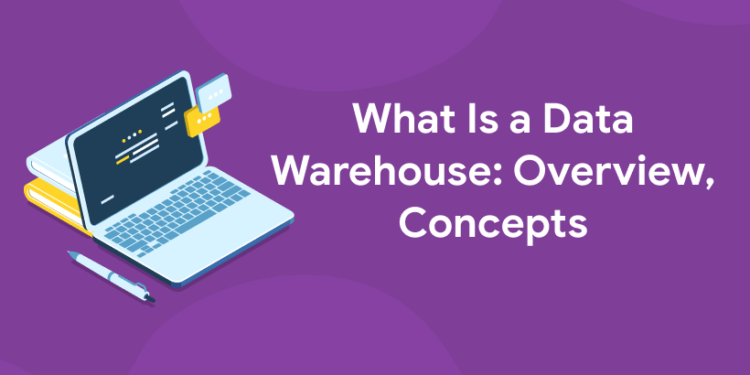Table of Contents
What is a Data Warehouse?
A data warehouse is a central collection of data that can be examined to help decision-makers become more knowledgeable. Transactional systems, relational databases, and other sources all regularly and continuously feed data into a data warehouse. Through business intelligence (BI) tools, SQL clients, and other analytics software, business analysts, data engineers, data scientists, and decision-makers have access to the data. Analytics and data have become crucial for firms to remain competitive. Reports, dashboards, and analytics tools are used by business users to analyze data, track corporate performance, and aid in decision-making. These reports, dashboards, and analytics tools are powered by data warehouses, which store data effectively to reduce data input and output (I/O) and swiftly deliver query results to hundreds of thousands of users.
Get the latest updates on data science in the Entri app
1: Which of the following algorithms is most suitable for classification tasks?
How is a Data Warehouse architected?
Tiers make up a data warehouse architecture. The front-end client, which represents the top tier, uses tools for reporting, analysis, and data mining to provide results. The analytics engine, which is used to access and analyze the data, is part of the middle layer. The database server, which loads and stores data, is the lowest tier of the architecture. Data is kept in two separate ways: 1) often used data is kept in extremely quick storage (like SSD drives), and 2) rarely accessed data is kept in an affordable object store, like Amazon S3. In order to improve query speed, the data warehouse will automatically shift frequently accessed data into “fast” storage.
To know more about data science in Entri app
How does a Data Warehouse work?
Multiple databases could be found in a data warehouse. Data is arranged into tables and columns within each database. You can specify a data description for each column, such as an integer, a data field, or a string. Schemas, which you could imagine as files, can contain tables that are grouped in them. Data that is ingested is kept in the various tables that the schema describes. The schema is used by query tools to choose which data tables to access and examine.
One comprehensive database is created through the integration of data and information gathered from numerous sources. A data warehouse, for instance, might combine client data from a company’s point-of-sale systems, mailing lists, website, and feedback forms. Additionally, it could contain private information about the personnel, such as their salaries. These data warehouse components are used by businesses to assess their customers.
Enroll in our latest data science course in the Entri app
What are the benefits of using a Data Warehouse?
A data warehouse has the following advantages:
- Making wise decisions
- data compiled from a variety of sources
- analysis of historical data
- Data correctness, reliability, and quality
- separation of analytics and transactional databases, which boosts both systems’ performance
Get free placement assistance with Entri app
How do Data Warehouses, databases, and data lakes work together?
Businesses typically utilize a database, a data lake, and a data warehouse in combination to store and analyze data. The lake house architecture of Amazon Redshift makes such an integration simple.
A data warehouse is created specifically for data analytics, which includes scanning vast amounts of data to recognize patterns and relationships. A database is used to collect and store data, including transactional information.
A data lake is a centralized store for all data, including structured, semi-structured, and unstructured data, as opposed to a data warehouse. The schema is used to organize data into a tabular format, which is necessary for a data warehouse. To enable SQL to query the data, a tabular format is required. However, not all applications demand that the data be in tabular form. Some programs can access data even if it is protected, such as big data analytics, full-text search, and machine learning
Get the latest updates on data science in the Entri app
Types of Data Warehouse
There are three main types of the data warehouses.
Enterprise Data Warehouse (EDW)
This kind of warehouse functions as a crucial or core database that supports decision-support services across the entire organisation. Access to information from across organizations, a unified approach to data representation, and the ability to execute complex queries are all advantages of this kind of warehouse.
Operational Data Store (ODS)
Real-time updates are made to this kind of data warehouse. It is frequently chosen for common tasks like keeping employment records. When the business’s reporting needs are not supported by data warehouse solutions, it is necessary.
Get the latest updates on data science in the Entri app
Data Mart
A data mart is a portion of a data warehouse designed to manage a certain division, area, or business unit. Every division of a company has a central repository or data mart where data is kept. Periodically, the ODS stores data from the data mart. The data is subsequently transmitted from the ODS to the EDW, where it is used and stored.
Enroll in our latest data science course in the Entri app
Data Warehouse Example
Let’s examine a few examples of data warehouses of businesses utilizing data warehouses as a crucial component of daily operations. Data warehouses are typically used by investment and insurance organizations to study the market, consumer, and related data patterns. A single point discrepancy can produce considerable losses for all participants in some subsectors, such as the Forex and stock markets.
Data warehouses are used by retail chains for marketing and distribution so they can track products, look at price structures, and assess consumer purchasing patterns. For corporate intelligence and forecasting requirements, they use data warehouse models. In contrast, healthcare organizations use data warehouse principles to create treatment reports and communicate data with insurance providers, and with departments of research and medicine. Because they require the most recent, updated treatment information to save lives, healthcare organizations significantly rely on business data warehouses.
Get the latest updates on data science in the Entri app
Data Warehousing Tools
Are you curious about data warehouse tools? These are software elements that are used to carry out numerous operations on a large data set. These instruments aid in gathering, reading, writing, and transferring data from many sources. What are the uses of data warehouses? They are made to facilitate processes like data merging, filtering, and sorting.
Data warehouse applications can be categorized as:
- Query and reporting tools
- Application Development tools
- Data mining tools
- OLAP tools
Some popular data warehouse tools are Xplenty, Amazon Redshift, Teradata, Oracle 12c, Informatica, IBM Infosphere, Cloudera, and Panoply.
If you are interested to learn new coding skills, the Entri app will help you to acquire them very easily. Entri app is following a structural study plan so that the students can learn very easily. If you don’t have a coding background, it won’t be a problem. You can download the Entri app from the google play store and enroll in your favorite course.











